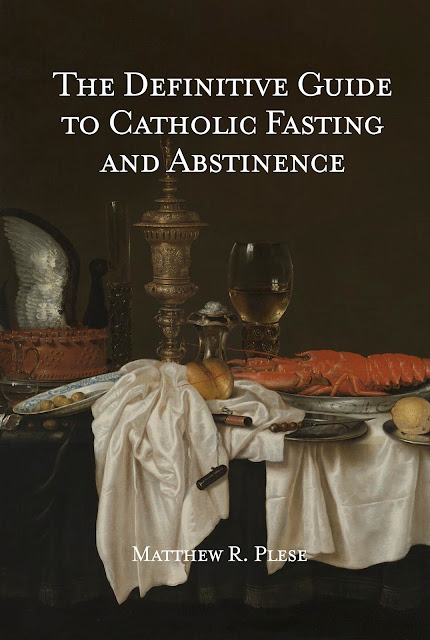Baptism is the “gateway to the sacraments” and the foundation of Christian life. Through it, the soul is cleansed of original sin, infused with sanctifying grace, and incorporated into the Mystical Body of Christ. For centuries, the Church’s baptismal liturgy developed organically, drawing from Scripture, Apostolic Tradition, and centuries of pastoral experience. The rite was rich in symbolism, theological clarity, and spiritual protection for the newly baptized.
Following the reforms of the Second Vatican Council, the baptismal rite was substantially altered in the Ordo Baptismi Parvulorum (1969). While the validity of baptism in the new rite remains — provided the essential matter, form, and intention are present — the differences between the pre-Vatican II and modern rites are not merely cosmetic. They reflect shifts in emphasis that have significant theological and pastoral implications.
Structure of the Pre-Vatican II Baptismal Rite
The Rituale Romanum (1614, revised until 1962) contains the traditional Roman Rite of Baptism, which is notably longer and more elaborate than its modern counterpart. Major features include:
1. Multiple Exorcisms
The traditional rite contains three explicit exorcisms and other minor exorcistic prayers. These call upon God to drive out the devil and protect the soul from his influence. The first exorcism begins: “Depart from him (her), unclean spirit, and give place to the Holy Ghost, the Paraclete.”
These prayers express the Church’s perennial teaching that, until baptism, the soul is under the dominion of original sin and subject to Satan’s claim.
2. Use of Blessed Salt
Before entering the church, the priest places blessed salt — itself exorcised — on the child’s tongue: “Receive the salt of wisdom; let it be to you a token of mercy unto eternal life.”
The salt symbolizes purification, preservation from corruption, and the wisdom of the Gospel. In the modern rite, this ancient practice is optional and rarely used.
3. Sign of the Cross and Laying on of Hands
The priest traces the sign of the cross on the forehead and breast, claiming the child for Christ, and lays hands in prayerful authority. This expresses the spiritual “marking” of the soul, prefiguring the baptismal character.
4. Admission into the Church
In the traditional rite, the priest leads the godparents (holding the child) into the church building after the initial prayers at the door. This liturgical movement from outside to inside symbolizes the soul’s journey from the state of sin into the life of grace and the household of God.
5. The Ephphetha
One of the most striking elements is the Ephphetha rite, in which the priest touches the ears and nostrils of the child with spittle, saying: “Ephphetha, that is to say, Be opened, for an odor of sweetness. But you, devil, be gone, for the judgment of God is at hand.”
This recalls Christ’s healing of the deaf man in Mark 7:34–35 and signifies the opening of the senses to receive God’s Word.
6. Profession of Faith and Renunciation of Satan
The godparents respond on behalf of the child to three renunciations of Satan and three affirmations of the Creed. The repetition underscores the seriousness of rejecting sin and embracing the Catholic Faith without compromise.
7. Triple Immersion or Pouring
The priest pours water three times over the head, saying the essential form: “I baptize thee in the name of the Father, and of the Son, and of the Holy Ghost.”
8. Additional Anointings
The traditional rite contains a pre-baptismal anointing with the Oil of Catechumens (symbolizing strength against evil) and a post-baptismal anointing with Sacred Chrism (signifying the indwelling of the Holy Ghost and consecration to God).
9. White Garment and Baptismal Candle
The newly baptized is clothed in white and given a lit candle, signs of purity and participation in the light of Christ.
The Post-Vatican II Rite (1969)
The modern rite is considerably shorter and rearranged:
- Only one exorcism prayer remains, and it is optional in some regions.
- Blessed salt is omitted entirely or made optional and rarely used.
- The Ephphetha rite is optional and simplified (no exorcistic words against the devil).
- The baptism is performed entirely within the church, without the symbolic procession from outside to inside.
- Language often emphasizes welcome into the “community” rather than deliverance from sin and the devil.
- Many prayers once directly addressed to Satan are removed or softened.
- Who is eligible to serve as a godparent also changed as did the allowance of a non-Catholic Protestant, called a “Christian witness,” to stand alongside the godparent.
Theological Implications of the Changes
1. Diminished Sense of Spiritual Warfare
The traditional rite makes explicit the Church’s teaching on original sin and the devil’s claim over the unbaptized. The repeated exorcisms are not mere ceremony — they are real prayers of deliverance. The modern rite’s omission or softening of these prayers reflects a broader post-conciliar trend to downplay the reality of demonic influence.
2. Weakening of Sacramental Symbolism
The blessed salt, processional entry, and Ephphetha powerfully express theological truths about the journey from sin to grace, the necessity of divine wisdom, and the opening of the soul to God. The removal or optional status of these elements weakens catechesis through liturgy.
3. Shift from Objective Grace to Subjective Welcome
The older rite clearly teaches that baptism cleanses the soul, imparts sanctifying grace, and delivers from the devil. The newer rite often emphasizes incorporation into the community of believers, which can obscure the ontological change baptism effects in the soul.
Why the Traditional Rite Deserves Preservation
While both rites can validly confer baptism, the traditional Roman Rite offers a more complete catechesis, richer symbolism, and a clearer proclamation of the Catholic Faith’s supernatural worldview. It does not presume that the faithful understand baptism’s meaning — it teaches it through the prayers, gestures, and sequence of the rite itself.
As Pope Pius XII taught in Mediator Dei (1947): “The liturgy is the public worship which our Redeemer, the Head of the Church, offers to the heavenly Father, as well as the worship which the community of the faithful renders to its Founder… It is also a most powerful means of instruction.”
In the traditional rite, every action and word is a lesson in the Faith — for godparents, family, and the faithful present. Its recovery is not an exercise in nostalgia but a restoration of a profound theological and pastoral treasure.

















